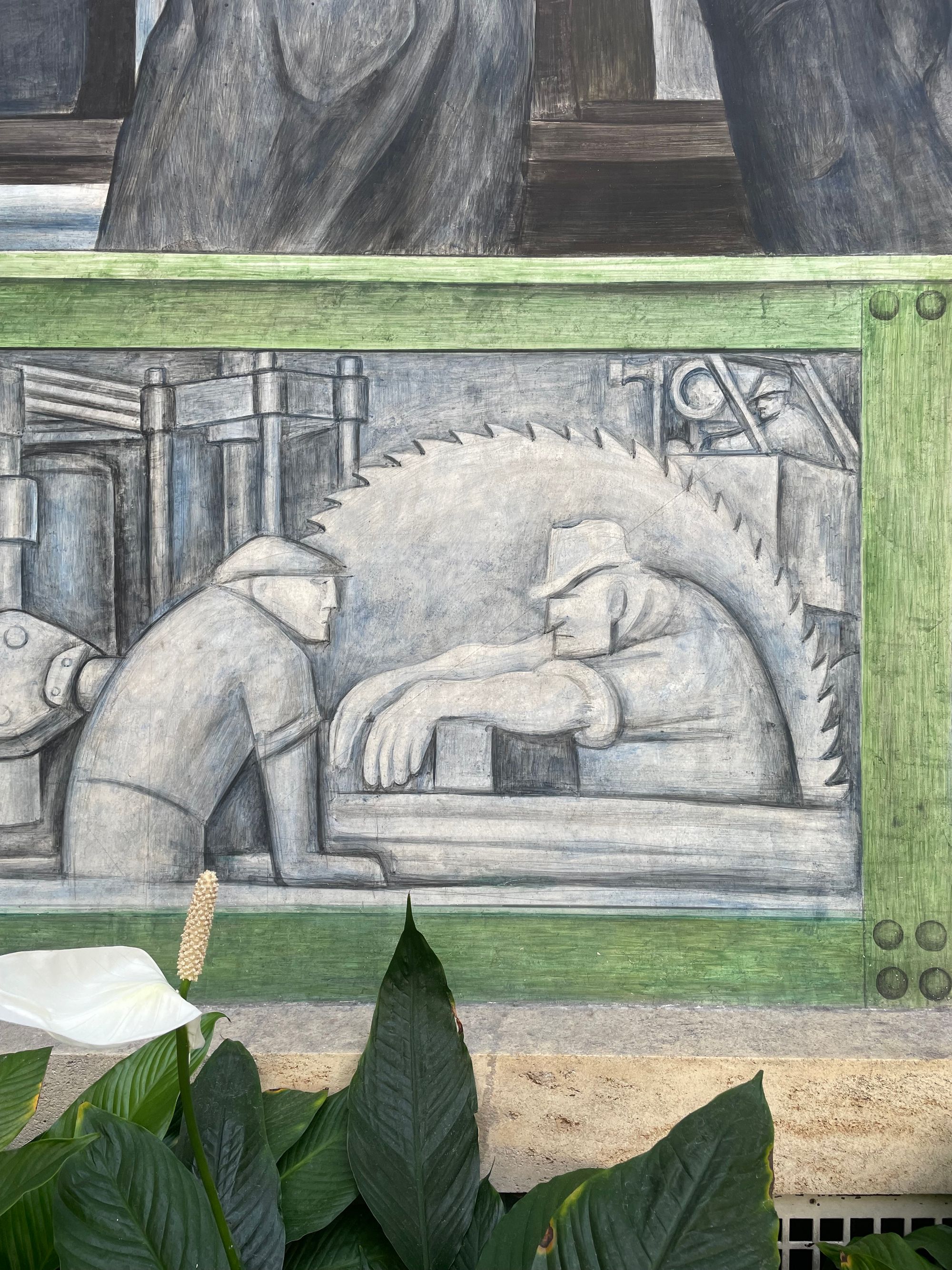70: Detroit Industry
Over Labor Day weekend, I went to Detroit with a handful of friends. Most of us had never been before, and it was a good excuse to get together and spend time talking and laughing and eating good food. We hit a few bookstores and record stores, but the big draw was the Detroit Institute of Art.
One of my favorite things about going to art museums is seeing something I recognize but hadn't expected. I rarely look up which artworks are in a museum when I go for the first time. It's not that I'm incurious; it's that I don't want to treat paintings and sculptures like they're some kind of highbrow Pokemon where I have to see them in order to check them off a list. It would be great to see Van Gogh's Starry Night someday, but I don't want to see it just to snap a photo and say that I've seen it in person. It's more rewarding, for me, to turn a corner and find something I recognize but hadn't expected to see–this time it was the 1782 Copley painting Watson and the Shark.
My other favorite thing is being struck by something completely new. I'm a museum enthusiast, but my art history education is limited to the one class I took in college and an enthusiasm for pop culture trivia. I like being knocked back on my heels by striking images. I know enough to know that my favorite painters are Van Gogh and O'Keeffe, and maybe that makes my taste in famous painters a little basic, but it also means that if I can find another artist who renders flowing shapes with weight and depth and jewel tones, then I'll appreciate their work.
Enter the Detroit Industry murals by Diego Rivera. I spent a solid thirty minutes in the courtyard with my neck craned upward, drinking in the detail. These frescoes are massive. They celebrate the work Detroit was known for in the early 1930s: factories and foundries dominate the largest panels, but smaller ones show farming and pharmaceuticals as well. There's a sense of balance throughout the room: war and peace, industry and rest, fruits and grains, life and death, surgery and health. That balance is marred by the human figures near the top of the ceiling–Rivera painted a white woman, an Indigenous American, and Black man, and a Chinese man looking down over the room, and the Chinese man in particular reads as a racist caricature. There is a danger, I think, to simple balance, and Rivera oversteps in this specific (very large) detail. I can't excuse that piece of the mural. But what I can't shake is the bright aching blue of the sky and the men with their broad backs straining on the assembly line, the glint of their boss's glasses watching everything, the glow of sparks reflecting off the welders' goggles, and the two men with jaws like granite resting between factory cycles.

Thank you for reading. If you have any thoughts, or just want to drop me a line, feel free to get in touch. This newsletter is free, but if you'd like to support my work, you can pay for a subscription, which helps me keep the pilot light on.
What I wrote:
I read The Last Voyage of the Demeter as being heavily influenced by Alien3, so much so that it both increased my enjoyment of the film, and made me wish the movie was better. I got the chance to write about it for Tor.com, which you can read here.
What I talked about:
This week on Seeing & Believing podcast, Kevin and I talked about Emma Seligman's sophomore feature Bottoms, which is a hoot. I paired it with the 1953 Gentlemen Prefer Blondes for our Watchlist segment, which was a hoot and a half.
What I'm listening to:
Olivia Rodrigo's Guts. It's back-to-school season. The neighbor kids all have new backpacks and every time I find myself in Hyde Park I'm dumbstruck by just how young the college freshmen are. They're children! I feel old for feeling this way, and even older for typing it! Back-to-school season always made me feel like an extraterrestrial because I was homeschooled all the way up through senior year. Guts sure isn't helping my feelings about aging, but it is a sharp portrait of what it's like to feel alienated amongst your peers because you've been asked to grow up too quickly. It's an angry album, and I think it works because of the specificity of its anger.
Member discussion